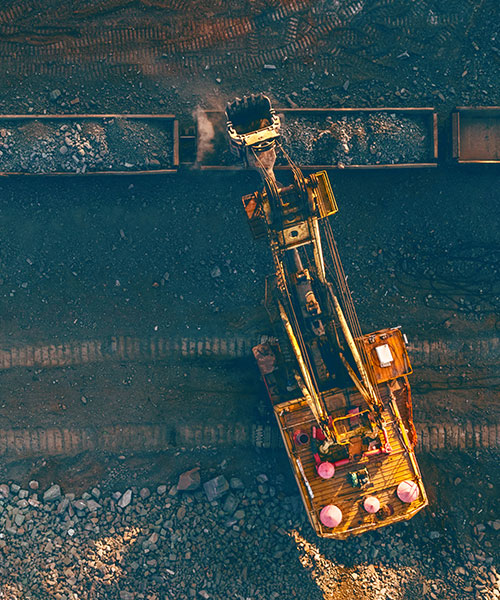October 09, 2025 • 3 min read
Mining’s tipping point: Unlocking capital efficiency through new models and technology
Mining and resources companies are under pressure to deliver projects faster, leaner and more predictably. But the weight of legacy practices is holding them back.
“We’re at a tipping point,” starts Mike Placer, Americas Sector and Sales Lead – Mining, Minerals and Metals. “The industry can’t afford to keep doing things the same way. Success will go to those who embrace new delivery models and technology solutions as catalysts of change.”
An industry stuck in old habits
Capital projects in mining are consistently underperforming. According to Placer, “Cost overruns and delays have become the norm rather than the exception.” Many organizations still rely on transactional approaches, traditional forms of contract, immature digital or information flow practices and a culture that perpetuates silos.”
At the same time, the environment surrounding these projects is more demanding. Investors are requiring more certainty and faster execution, customers want sustainable and resilient supply chains and governments need transparency and accountability to achieve net zero targets.
This underperformance has led to a loss of investor and owner confidence. EY’s Top 10 Business Risks and Opportunities for Mining and Metals 2025 highlights capital as the single largest risk to the sector; above environmental stewardship and geopolitics and reserve depletion. Banks and institutional investors have not typically seen mining as a safe bet, and with other sectors offering stronger returns at lower risk, the industry struggles to attract capital.
So, what can be done?
Transactional models can’t keep pace
“The core issue lies in the contracting model,” Placer says. “When customers focus on transferring risk, costs inflate and it undermines collaboration.” Instead of building shared responsibility, these transactional models create friction and slow projects down when speed matters most.
At the same time, the digital revolution has largely overlooked important aspects of project delivery. According to Placer, “The mining industry generates vast amounts of data, but very little of it is connected or actionable.” This means teams often spend more time reconciling spreadsheets and unreliable data than actively collaborating to identify project opportunities for acceleration, optimization or risk reduction that create value.
New models and digital transformation
Placer sees three interconnected shifts as essential: rethinking contracting models, embedding digital in the foundation of delivery, and utilizing a Minimum Viable Project (MVP) model:
- Contracting models that enable collaboration
Collaborative contract models create incentives for shared success, instead of risk-shifting. The goal is to define mutual value and then reward outcomes, not just activities. “When both sides are motivated by the same result, you get better alignment, faster decisions, higher efficiencies and ultimately lower total cost,” Placer says.
- Digital as a core enabler
Placer points to three digital focus areas:
- Connected project data – a single source of truth across engineering, procurement, planning and construction, including the voice of the end customers to guarantee a seamless ramp-up and commissioning.
- Digital twins, 'smart' predictive tools – simulating and de-risk decisions before they’re made, reducing rework, maximizing value and accelerating delivery. Ideally, the tech will extend beyond simulation and leverage AI to optimize design, enhance planning and procurement and improve execution and commissioning efforts.
- Real-time decision making during project execution – using sensors, robotics, wearables, and connected devices (including drones), providing live data on productivity, cost and safety to control centers, help enhance project execution efficiency.
- Minimum Viable Project (MVP)
The MVP model takes a staged development approach to projects, making it beneficial in periods of uncertainty and less risky to investors as initial capital is optimized to minimize risk until the ore body and metallurgy is better understood. The model can help reduce financial and technical risks and potentially reduce Net Present Value but when adopted smartly will always reduce risk of significant wealth destruction. It supports improved cash flow earlier in the project, leading to better self-financing potential, enhance long-term sustainability outcomes and increased return on investment.
Together, these shifts can transform project performance, replacing uncertainty with confidence, conflict with collaboration and inefficiency with more predictability.
The path forward
Change is imperative, Placer says. “The demand curve is on the rise and projects are becoming increasingly complex. If we continue with the same old methods, we’ll achieve the same results, and our industry simply cannot afford that anymore.”
Business as usual is no longer an option. As capital becomes scarcer, only those who can demonstrate predictable, responsible use will gain the trust and funding to deliver the projects the energy transition needs.
For Placer, “The way forward requires the industry to adopt new contracting models and leverage technology to drive transformation. This isn’t a lofty vision; these are realistic actions backed by proven technologies.”
By embracing new contracting models and embedding digital foundations, mining companies can break free from the cycles of overruns and delays. The question is no longer whether change is needed, but how fast we’re prepared to move.




